09/19/19
K-State Current - September 19, 2019
K-State Current is a weekly news update for the Kansas Board of Regents to apprise the Regents on a few of the many successes and achievements made by K-State faculty, staff and students.

K-State News
Farmer uses agricultural technology to plant image of popular K-State logo
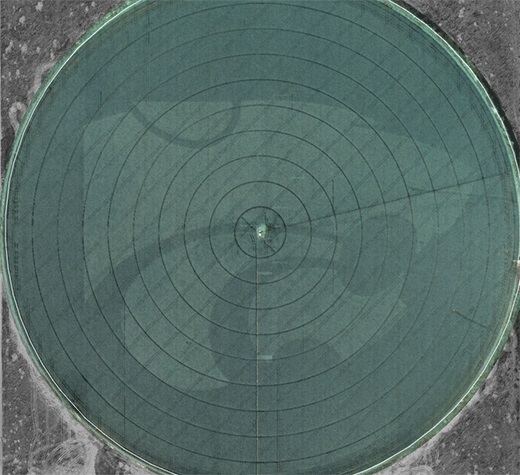 Ormiston Farms of Kismet, Kan. planted a corn variety in the shape of the K-State Powercat. At 2000 feet wide, it's thought to be the largest version ever made of the logo. (Photo courtesy of Ormiston Farms)
Ormiston Farms of Kismet, Kan. planted a corn variety in the shape of the K-State Powercat. At 2000 feet wide, it's thought to be the largest version ever made of the logo. (Photo courtesy of Ormiston Farms)
Folks across the country find all kinds of ways to celebrate their favorite universities and sports teams.
This summer, Rocky Ormiston may have just out-done them all.
The co-owner of Ormiston Farms used precision agriculture technology to plant a hybrid of corn in the shape of the Kansas State University Powercat, which -- at 2,000 feet wide -- is thought to be the largest version ever made of the popular logo.
Pictures taken several hundred feet above the field show a perfectly groomed Powercat inside a 125-acre circle that measures one-half mile wide. “The Powercat covers about 40 acres of that circle,” Ormiston said.
Today’s precision agriculture machines allow farmers to plant multiple varieties of farm crops in one pass, depending on the farm soil or other factors. In the case of Ormiston’s Powercat, he used the technology to plant one corn variety in a very precise pattern, and then used a different variety for all other parts of the circle.
The two varieties have different colored tassels, creating a color difference between the larger field and the Powercat, “measured right down to the inch,” Ormiston said. The image, which represents the university’s Wildcat mascot, is expected to last for about two weeks, he added.
Using computer software from CropQuest, an agricultural consulting company, Ormiston (a 2006 K-State grad in agricultural economics) and his wife Stephanie (a 2006 K-State grad in marketing) dropped an image of the Powercat onto a picture of the field to assign “zones” for planting corn.
“You assign that Powercat a variety, and the rest of the field gets the other variety,” Ormiston said.
The computer program communicates with the tractor, which serves as a controller for the 80-foot-wide planter. As the farmer drives through the field, the computer program communicates with a pair of meters on the planter, which methodically releases the assigned variety at the precise time and in a precise location.
The Ormiston Farm, which manages 7,000 acres of irrigated land, purchased the technology nearly two years ago because their farm’s soil was highly variable.
“This technology was created to plant the best variety regardless of soil type, so you could maximize every acre on that field,” Ormiston said. “Instead of just putting one variety that does average across the entire field, we can plant two varieties that both do well on that field.”
The field where the Powercat was planted was an area where the soil was consistent, Ormiston said. It gave him the opportunity to “just have some fun.”
“We’ve been talking about doing this since we bought the planter,” he said. “I just didn’t want to do it the first year because I wanted to make sure everything was going to work first.”
Ormiston manages the family’s farm with his father, Rock, who also graduated from K-State in 1978 with a degree in agricultural economics. Their farm is located about 17 miles northeast of Liberal, Kan.
K-State Olathe lab testing delta-9 THC, CBD cannabinoids for hemp growers
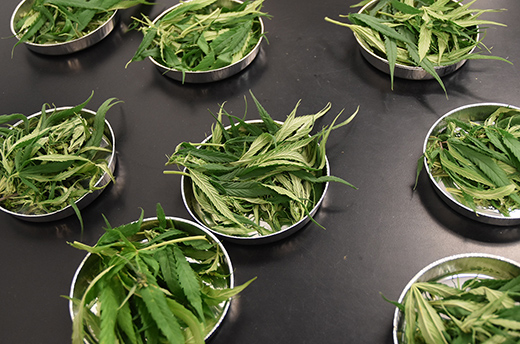
Researchers at Kansas State University's Olathe campus are helping Kansas hemp growers clear the smoke when it comes to knowing the levels of delta-9 THC and CBD concentrations in their industrial hemp crop.
Now, growers can voluntarily send samples of their hemp crop to the Postharvest Physiology Lab at K-State Olathe to get the samples analyzed and quantified for five hemp-based cannabinoids, including delta-9 THC and CBD. Results are confidential and given to growers three to five business days after receiving a plant sample.
The Postharvest Physiology Lab is directed by Eleni Pliakoni, Ph.D., associate professor of urban food production and postharvest handling. It is the only state-licensed testing facility in Kansas outside of the Kansas Department of Agriculture, or KDA. The K-State Olathe lab uses the same testing methods as the state agriculture department. The lab received a State Educational Institution License from the department as part of the 2019 Kansas Industrial Hemp Research Program.
"We've been working closely with the KDA chemists to make sure that our testing methods are identical so that it's a beneficial service to growers," Pliakoni said. "We help growers check their crop's THC levels before the regulatory testing is done by the KDA. We also are providing growers with their crop's CBD levels, which will help them better market their product."
Hemp and hemp production in Kansas
Hemp can be used to create fabric, paper, biofuel, plastics, health foods, cosmetics, building materials and more.
Changes to the 2018 Farm Bill made it possible for Kansas and 41 other states to grow hemp as an alternative industrial crop. Kansas made 2019 its pilot year for small-scale hemp production and is vying to be America's capital for hemp production. Missouri will allow limited hemp farming in 2020.
Hemp is a variety of cannabis and as such, it has chemical compounds called cannabinoids. Some cannabinoids contain psychoactive ingredients, such as delta-9 THC, that affect the mind and behavior, while other cannabinoids, such as CBD, contain health benefits.
Delta-9 THC levels in hemp are significantly lower than those in marijuana. The delta-9 THC levels of hemp can rise though if the plant becomes stressed by dry conditions, wind or other weather events. Because of this, the KDA requires that testing be done on every hemp crop to ensure that delta-9 THC levels are not above the legal limit of 0.3%. Tricia Jenkins and Joseph Rundquist, both master's students in the Postharvest Physiology Lab, add the powdered hemp to a solution so it can be analyzed by an ultra-high-pressure liquid chromatography machine.
Tricia Jenkins and Joseph Rundquist, both master's students in the Postharvest Physiology Lab, add the powdered hemp to a solution so it can be analyzed by an ultra-high-pressure liquid chromatography machine.
Lab testing
Researchers are measuring the levels of CBD, CBDA, CBN, delta-9 THC and delta-9 THC-A — two forms of THC that are added together to give the crop's overall THC level. When smoked or burned, THC is converted to THC-A, the acid form of THC.
"Hemp can have more than 100 cannabinoids, but these are five major ones that have been well studied," said Tricia Jenkins, master's student in horticulture and natural resources who helped establish the Olathe lab's hemp analysis testing and oversees its operations.
In late August, Jenkins and others in the Postharvest Physiology Lab at K-State Olathe received the first hemp samples for testing from Kansas growers.
Growers send the lab 20 centimeters off the top of a few hemp plants. Researchers dry the samples for 48 hours — the longest step in the process — to remove moisture and provide the most accurate analysis of the plant's chemical makeup.
After the hemp parts are dried, the samples are ground into a fine powder to homogenize it. The powdered hemp is transferred into a vial containing a solution, which turns the liquid bright green. The vial is then loaded into an ultra-high-pressure liquid chromatography machine, which produces a reading of the hemp sample's composition.
Jenkins anticipates analysis to steadily ramp up in mid-September when hemp begins to flower, a point at which CBD levels are at their peak.
University hemp research
Kansas State University is providing resources and guidance to hemp growers across the state.
K-State Research and Extension is growing hemp for research purposes at four locations in Kansas — one of which is at the K-State Olathe Horticulture Research and Extension Center. The plots are being used to replicate different environments so that researchers can determine what grows well, how best to grow it, when CBD is peak, and more. This information will help growers maximize their profits as Kansas' hemp production scales up in 2020. These efforts are being led by Jason Griffin, director of the John C. Pair Horticulture Center in Haysville.
More information about the analysis and test request forms for hemp growers are at olathe.k-state.edu/hemp.
K-State Faculty Highlights
K-State criminologists awarded National Science Foundation grant to study cybercrime policing

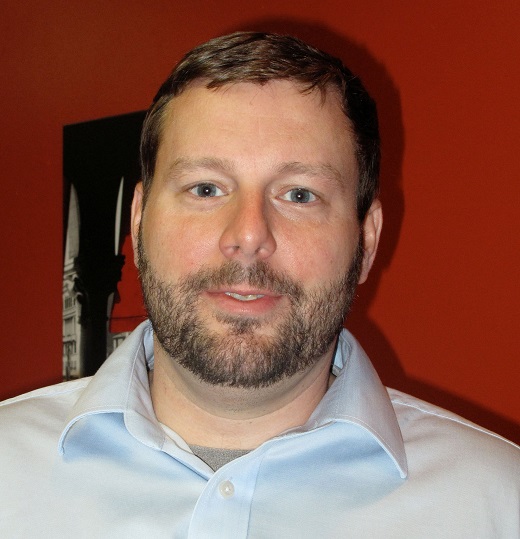 K-State criminologists Kevin Steinmetz and Don Kurtz have been awarded a three-year National Science Foundation grant in collaboration with Brian Schaefer of Indiana State University.
K-State criminologists Kevin Steinmetz and Don Kurtz have been awarded a three-year National Science Foundation grant in collaboration with Brian Schaefer of Indiana State University.
The award amounts to more than $480,000 between the two universities and will be used to conduct research investigating law enforcement cybercrime investigators. Through qualitative interviews and analysis of department official documentation, the project will address questions such as "how do investigators navigate the challenges endemic to cybercrime cases?"; "how do investigators decide which cases are worth pursuing?"; "how do officers perceive cybercrimes and their victims?"; among others.
A Kansas State University professor will lead a collaborative research project exploring new means of treating infections with antibiotics.
 Michal Zolkiewski, professor and head of the Kansas State University Department of Biochemistry and Molecular Biophysics in the College of Arts and Sciences, has been awarded a four-year $1.9 million-plus grant from the National Institutes of Health to develop new antibiotics.
Michal Zolkiewski, professor and head of the Kansas State University Department of Biochemistry and Molecular Biophysics in the College of Arts and Sciences, has been awarded a four-year $1.9 million-plus grant from the National Institutes of Health to develop new antibiotics.
Zolkiewski will lead a team of investigators that includes Anuradha Roy, Frank Schoenen and William Picking from the University of Kansas.
"Decades of global antibiotic misuse and overuse along with a lack of commercial incentives to develop new drugs have brought us to a point where antimicrobial resistance is a major threat to human health," Zolkiewski said.
According to the Infectious Disease Society of America, at least 2 million Americans each year develop infections from antibiotic-resistant pathogenic microorganisms and about 25,000 of them result in death.
"The development of novel antimicrobial strategies and the discovery of new antimicrobials are highly relevant to global public health," Zolkiewski said. "We aim to develop a new paradigm of antimicrobial therapy so future generations do not face an existential threat of dying from common infections."
The Zolkiewski research group at Kansas State University has been at the forefront of studies on the biological function and biochemical mechanism of a bacterial protein called ClpB. In bacterial cells, ClpB helps other proteins maintain their activity and its role is particularly important in pathogens during infection of a host. Zolkiewski hypothesizes that ClpB could become a promising target for new antibiotics, which would exploit a previously unexplored vulnerability of pathogens: a need to protect the quality of their proteins during infection.
With support from the new NIH award, Zolkiewski and his colleagues will search for chemical compounds that inhibit ClpB and suppress bacterial growth. An interinstitutional collaboration leverages the protein biochemistry expertise in the Department of Biochemistry and Molecular Biophysics at Kansas State University and KU's prominence in pharmaceutical chemistry and drug development. The studies could eventually bring new antibiotics to the market and also provide useful information on pathogen-host interactions during infections.
K-State Student News
Changing the conversation about millennials and Gen Z
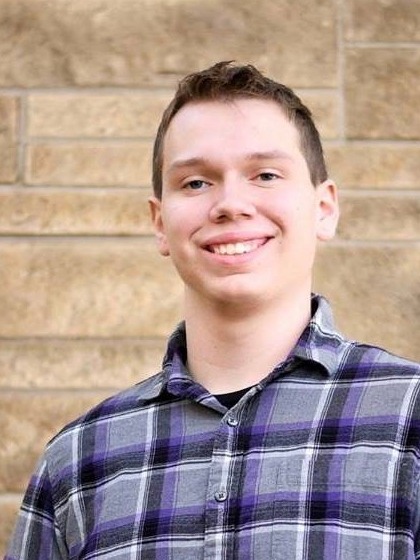 K-State Journalism and Mass Communications student Grayson Gilbert, a sophomore from Tonganoxie, KS, recently represented the state of Kansas during conversations with industry executives.
K-State Journalism and Mass Communications student Grayson Gilbert, a sophomore from Tonganoxie, KS, recently represented the state of Kansas during conversations with industry executives.
Discussions focused on how employers can connect and engage with millennial and Generation Z employees. Conversations occurred at notable businesses including the McDonald’s Corporation, Northwestern Mutual, and Allstate Insurance Company. The trip was sponsored and coordinated by the National Millennial Community (NMC), an organization that executes think tank conversations with key influencers in media and business. Gilbert received a scholarship from NMC that provided this all-expenses paid opportunity.
“It was an amazing experience,” Gilbert said. “I was able to hold perception-changing conversations with some of the marketing communications field’s finest minds while connecting with other future professionals from campuses around the world.”
Gilbert was able to provide a unique perspective in an already diverse group. “I talked to students from the coasts who’ve never met anyone from Kansas, he said. “I loved telling them about my home and hearing about theirs. I have a much broader perspective of the world because of this trip.”
 Members of the millennial and Generation Z population are often misperceived in the workplace setting. Encouraging open dialogue that addresses these misperceptions facilitates positive change and develops meaningful relationships.
Members of the millennial and Generation Z population are often misperceived in the workplace setting. Encouraging open dialogue that addresses these misperceptions facilitates positive change and develops meaningful relationships.
“When students from places such as Kansas State University visit with corporate executives, they reinforce the importance of engaging young adults before they enter the workforce,” said Bill Imada, NMC Founder and Chairman and Chief Connectivity Officer of IW Group, Inc. “But, more importantly, corporate executives want to hear from students like Grayson Gilbert since he represents the future of our country.”
“We are grateful that NMC selected K-State Journalism and Mass Communications students to represent the state of Kansas to be part of these important conversations,” said Dr. Danielle LaGree, assistant professor and NMC faculty sponsor. “Our students are able to get out of their comfort zones through interpersonal interaction with high-level executives that provide mutually beneficial experiences for everyone involved.”
K-State teams perform well at North American Weed Science Collegiate Contest
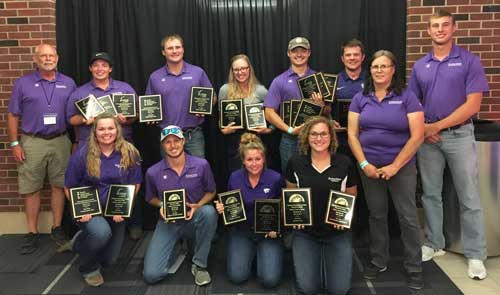 The K-State Weed Science Teams had a successful showing at the North American Weed Science Collegiate Contest, a national-level contest with universities from around the U.S. and Canada on July 25. There were also regional-level awards.
The K-State Weed Science Teams had a successful showing at the North American Weed Science Collegiate Contest, a national-level contest with universities from around the U.S. and Canada on July 25. There were also regional-level awards.
The four events in the contest include weed identification, farmer problem solving, written calibration problems and team field sprayer calibration, and identification of herbicide symptomology. A total of 241 students competed from 29 different universities, with 16 undergraduate and 51 graduate teams from across North America.
K-State competed with one undergraduate team and two graduate teams. At the national level, the undergraduate team took first place among all undergraduate teams. Members of that team included Dakota Came, Hayden Heigele, Jessica Schauf and Megan Workman. Came was recognized with top individual awards for the weed identification and identification of herbicide symptomology events.
The undergraduate team was recognized for additional awards at the North Central Weed Science Society level. They placed first among undergraduate teams competing in the North Central Weed Science Society. Individual awards included Came, first overall undergraduate score, and Schauf, third overall undergraduate score. Individual event winner was Came in the weed identification and identification of herbicide symptomology events.
The K-State graduate teams competed at the National level, and placed in the Western Society of Weed Science regional-level. One of the graduate teams placed first among all teams competing in the Western division of the contest, with the following members: Tyler Meyeres, Lindsey Gastler and Malynda O'Day. Individual graduate student awards included Meyeres, third overall graduate score. This team also placed first in the Graduate Team Field Sprayer Calibration event. Individual event winners were Gastler, weed identification, and Isaac Effertz, identification of herbicide symptomology. The members of the other graduate team were Ednaldo Borgato, Luke Chism and Effertz.
The teams were coached by Anita Dille, Kevin Donnelly and Dallas Peterson, all professors of agronomy.
The event was co-hosted by BASF, Bayer, Corteva and Valent at their research farms near Seymour, Illinois.